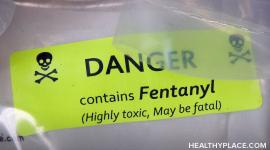Types of Opioids and Opioids Examples

Many different types of opioids are available, some legally but others illegally, for people to put into their system. Opioids are specific drugs that attach to receptors in the brain and body and create a high that involves decreased pain and an increased sense of pleasure, sometimes referred to as the opioid effect.
Not all opioids are the same. The legal forms of these drugs, prescription painkillers, can be incredibly helpful for the millions of people needing pain relief and thus are legitimate opioids prescription medications. In fact, opioids are one of the most commonly prescribed drugs. In 2010 alone, 200 million prescriptions were written for painkillers (Foreman, 2014).
However, this creates a problem and has contributed to the opioid crisis in America. Opioids are highly addictive, and easily so. The trend is dangerous: a large number of people become addicted to legal opioids and then turn to illegal opioids because they’re cheaper, stronger, and sometimes easier to get than prescriptions (Nolan & Amilo, 2016; National Institute on Drug Abuse, 2017). A recent study found that 80-percent of people who use heroin first had prescription painkillers.
Contributing to this problem is that it’s not always clear that something you’re taking is an opioid. If you know that a prescription painkiller is an opioid, you can be vigilant about how you’re taking it to prevent dependence. Here’s a look at the type of opioids that exist as well a list of which drugs are opioids so that you are equipped with the knowledge needed to prevent dependence, misuse, and opioid addiction.
Opioids Types
Very broadly, opioids are available in two types: prescription painkillers and illegal street drugs. This categorization, while useful, is a bit too vague. Types of opioids fall into four different classifications according to where/how they are made.
- Endogenous opioids are opioids that are actually made in the human brain
- Alkaloid opiates occur naturally in the opium plant and are harvested from the resin
- Semi-synthetic opiates are man-made but derived from natural opiates
- Fully synthetic opiates are completely man-made, in a laboratory or elsewhere
In addition to the classification system, opioids are grouped into one of two categories based on what they do with the opioid receptors in the brain and body.
- Opiate agonists are drugs that mimic the body’s own opiates and bind to opiate receptors, activating them in order to reduce pain and increase pleasure
- Opiate antagonists are drugs that block the action of an agonist and are used in pain treatment
See also: How Do Opioids Work? Mechanism of Action
Opioids Examples
While understanding opioids involves knowing the types, it’s especially helpful to know examples of opioids. The following is a partial list of common opioids in each category.
Endogenous opioids
- Endorphins
- Endomorphins
- Dynorphins
- Enkephalins
Natural (alkaloid) opioids
- Morphine
- Codeine
- Thebaine
Semi-synthetic opioids
- Hydromorphone
- Hydrocodone
- Oxycodone
- Heroin
Fully synthetic opioids
- Fentanyl
- Pethidine
- Levorphanol
- Methadone
- Tramadol
- Dextropropoxyphene
Some common brand names you might recognize include, but aren’t limited to,
- OxyContin
- Percocet
- Vicodin
- Percodan
- Tylox
- Demerol
Some illegal opioids examples are
- Chinese molasses
- O
- Big H
- Smack
- White lady
- Brown
- Speed balls (a mix of the opiate heroin and non-opiate cocaine)
- Hillbilly heroin (oxycodone)
- Oxys
- OCs
- Dreams
- Dreck
- Horse
- Toys
- Zero
- Gong
- Skee
- Mojo
Considering the many types of opioids that exist and the long list of examples (that is only a partial list), it becomes clear that a reason for the current opioid epidemic is the availability of opioids. Something that can be acquired naturally, made with both natural and synthetic ingredients, or fully made synthetically can flood both pharmaceutical and illegal markets. Add to this the fact that opioids are highly addictive substances, and the consequences of taking opioids nonchalantly can be dire.
The more you know about opioids, including opioids types and opioids examples, the better equipped you will be to protect yourself and/or loved ones from addiction.
APA Reference
Peterson, T.
(2021, December 16). Types of Opioids and Opioids Examples, HealthyPlace. Retrieved
on 2025, December 13 from https://www.healthyplace.com/addictions/opioid-addiction/types-of-opioids-and-opioids-examples



